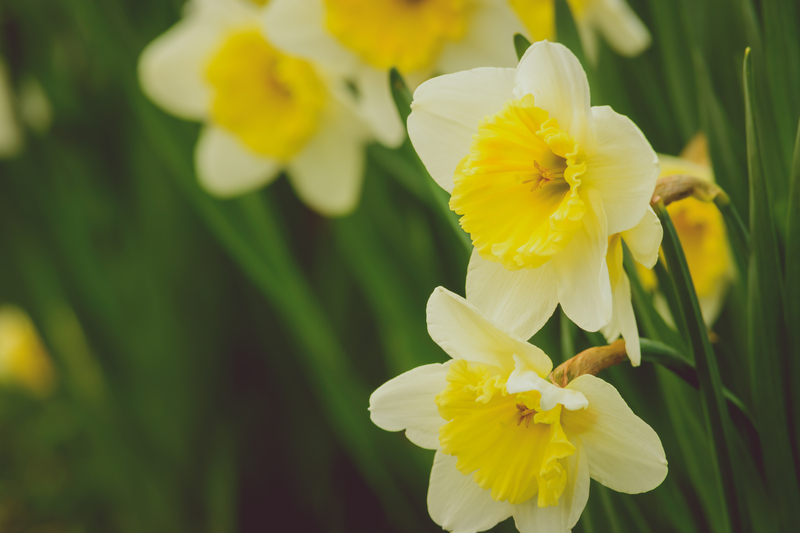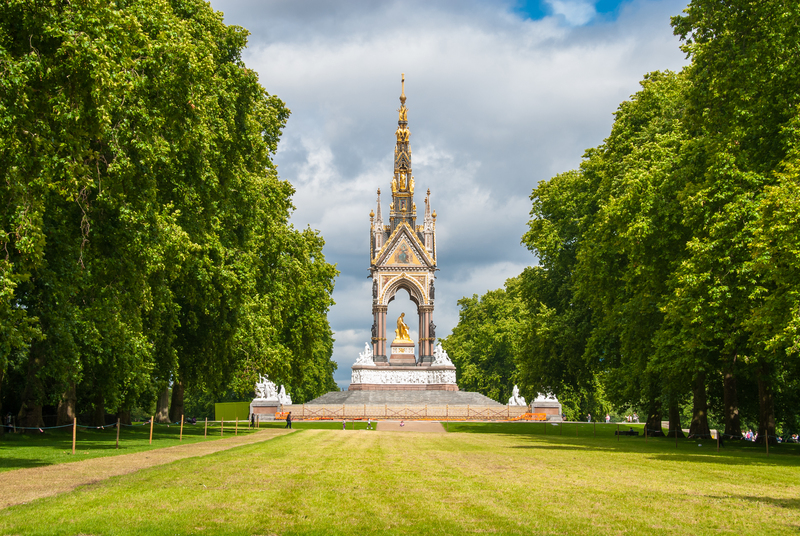Evergreen Climbers for Shade: Lush Escapes in the Dark
Posted on 16/05/2025
Evergreen Climbers for Shade: Lush Escapes in the Dark
Evergreen climbers can transform any shaded corner into a vibrant refuge. Often overlooked for their sun-loving counterparts, these adaptable plants thrive in low-light areas, creating vertical interest, privacy, and year-round greenery. Whether you are dealing with a north-facing wall, a shaded pergola, or an overhanging tree canopy, mastering the art of planting climbers for shade opens up endless design opportunities.
Why Choose Evergreen Climbers in Shady Spaces?
The beauty of shade-loving climbing plants lies in their ability to inject life, color, and texture into some of the most challenging areas of your garden. Here's why they deserve a spot in your green haven:
- Year-round Foliage: Provide persistent greenery, keeping spaces lush even in winter.
- Privacy and Screening: Their dense growth habit offers natural privacy screens in overlooked or shady zones.
- Low Maintenance: Most evergreens require minimal care, especially when sited properly.
- Wildlife Support: Offer shelter and food sources for birds and beneficial insects.
- Versatility: Suitable for walls, fences, trellises, arbors, and even as ground cover for tricky dark spots.

Understanding Shade: Where Will Your Climbers Thrive?
Before selecting your evergreen climbers for shade, it's important to understand the type of shade in your garden:
- Light Shade: Bright but indirect sunlight; ideal for many climbers.
- Dappled Shade: Filtered sunshine through tree canopies; great for woodland edge plants.
- Partial Shade: Sun for part of the day, usually morning or late afternoon.
- Deep Shade: Found beneath dense evergreen trees or on north-facing walls.
Tip: Study your site's specific conditions before planting to ensure the best choice and longevity for your climbing plants.
Top Evergreen Climbing Plants for Shady Gardens
There's a rich palette of evergreen shade climbers perfectly suited for creating lush escapes in darker garden corners. Let's discover some of the most reliable and attractive species:
1. Hedera helix (English Ivy)
English Ivy is perhaps the most iconic shade-loving evergreen climber. Its tough, adaptable nature makes it perfect for almost any low-light environment. Renowned for its classic green (and sometimes variegated) foliage, English Ivy quickly covers fences, walls, and ground, ensuring year-round coverage.
- Light requirements: Tolerates deep to partial shade.
- Notable varieties: 'Hibernica', 'Glacier', 'Goldchild' (variegated forms).
- Maintenance: Low; prune yearly to control spread.
- Benefits: Excellent for erosion control and urban air filtering.
2. Trachelospermum jasminoides (Star Jasmine or Confederate Jasmine)
Often prized for its waxy evergreen foliage and fragrant white blooms, Star Jasmine is a beautiful choice for shady arbors or pergolas. Although it prefers partial shade, it copes surprisingly well in brighter shade, enlivening even the darkest corners with its star-shaped flowers in late spring and summer.
- Light requirements: Partial shade to full shade (with reduced flowering).
- Key features: Glossy green leaves, clusters of sweetly scented flowers.
- Benefits: Attracts pollinators, deer resistant, drought tolerant once established.
3. Hedera colchica (Persian Ivy)
This cousin of English ivy has much larger, heart-shaped leaves and an equally impressive ability to thrive in the shadiest garden settings. It forms a dense mat of foliage - ideal for quickly covering unsightly structures or serving as an evergreen ground cover for dark areas.
- Light requirements: Deep to partial shade.
- Foliage: Larger, waxier leaves compared to H. helix.
- Advantages: Fast growth, handles poor soils, low maintenance.
4. Lonicera japonica 'Halliana' (Japanese Honeysuckle)
A reliable evergreen climbing vine for shade, the 'Halliana' variety maintains its green leaves through winter in milder climates. With sweetly scented tubular flowers and a tenacious twining habit, it's perfect for informal screens, trellises, or scrambling through shrubs.
- Light requirements: Partial shade, tolerates full shade.
- Flowers: White to yellow blooms from late spring to autumn.
- Note: In some regions, this honeysuckle can become invasive--check local guidelines before planting.
5. Clematis armandii
Unlike most clematis, which are deciduous, Clematis armandii keeps its elongated, glossy green leaves throughout the year. The starry clusters of fragrant, white flowers in spring are a highlight, while the plant's robust self-clinging nature makes it great for semi-shade or dappled light areas.
- Light requirements: Dappled or partial shade (protect roots from heat).
- Foliage: Attractive, leathery leaves even after flowering.
- Benefits: Fast-growing, can be trained over trellises and fences.
6. Euonymus fortunei (Wintercreeper)
Adaptable and resilient, Wintercreeper is an underrated choice for evergreen shade climbing coverage. It clings by aerial roots, scaling walls and fences, and is available in many variegated forms to brighten dim corners.
- Light requirements: Full to partial shade.
- Foliage: Variegated options ('Emerald Gaiety', 'Silver Queen') add interest.
- Versatility: Acts as both a ground cover and climber.
7. Pyracantha (Firethorn)
While often grown as a shrub, Pyracantha can be trained as a shade-tolerant climbing evergreen. Its glossy, prickly leaves provide great security and habitat, while clusters of white flowers followed by brightly colored berries create interest through seasons.
- Light requirements: Tolerates partial shade to full shade with some reduction in fruiting.
- Foliage and berries: Evergreen leaves, berries of orange, red, or yellow in fall and winter.
8. Fatshedera lizei
A unique hybrid between Fatsia and Hedera, Fatshedera produces large, hand-shaped leaves atop a non-twining, semi-climbing vine. It's a stylish option for contemporary shaded gardens and can be tied onto supports or allowed to scramble.
- Light requirements: Prefers partial to full shade.
- Foliage: Exotic, deep-green or variegated large-textured leaves.
- Maintenance: Low; prune to shape as needed.
How to Grow & Care for Shade-Loving Evergreen Climbers
Growing climbers in shade presents challenges, but with some simple strategies, you can guarantee robust, healthy plants:
Soil Preparation
- Enrich planting area: Work in plenty of organic matter -- evergreen shade spots often suffer from poor, dry soil.
- Mulch annually: This maintains root moisture and gradually improves soil texture.
Watering
- Establish roots: Young plants need regular watering until well rooted.
- Deep watering: Water less often, but thoroughly, to encourage deep root growth.
Feeding
- Balanced fertilizer: Shade can slow nutrient uptake -- apply a slow-release fertilizer in spring.
Training and Support
- Provide structures: Trellises, wires, or mesh help natural climbers find their way up walls or fences.
- Tie-in loosely: For types that don't self-cling, guide stems with soft garden ties or string.
Pruning
- Control spread: Trim annually to prevent invasive growth or encroachment on other plants.
- Remove dead material: Encourages healthy new shoots and maintains a tidy appearance.
Design Ideas: Lush Escapes in Shaded Spaces
Evergreen shade climbers aren't just about coverage -- they're key tools in outdoor design. Here's how to unlock their aesthetic power:
- Layered Planting: Underplant climbers with shade-loving perennials such as ferns, hostas, or hellebores to create depth and visual richness.
- Vertical Gardens: Adorn bare walls or tight corners with climbing evergreens for a dramatic, living tapestry effect.
- Secret Retreats: Use climbers to envelop pergolas, archways, and seating areas, creating secluded green sanctuaries.
- Color Contrast: Choose variegated or glossy foliage to brighten dim, shadowy spaces, breaking up the monotony of green.
- Wildlife Havens: Encourage birds, beneficial insects, and pollinators by incorporating berry- or flower-producing climbers.
Case Study: Transforming a North-Facing Wall
A neglected north-facing wall can become a showcase for lush, year-round color. By mixing English Ivy (for base coverage), Clematis armandii (for seasonal blooms), and variegated Euonymus fortunei (for contrast), you can achieve a textured, dynamic display with minimal ongoing care. These climbers will cope with the low light, accentuate architectural features, and even provide wildlife shelter.
Safety Considerations
- Some species, like ivy, can become invasive or damage certain wall types -- always research suitability and local recommendations.
- If planting in pet- or child-accessible areas, check for plant toxicity (e.g., pyracantha berries may cause stomach upset if eaten in large quantities).
Best Practices for Lasting Success
- Select species with proven shade tolerance for your zone.
- Plant at the right depth, ensuring the rootball sits level with the surrounding soil.
- Improve drainage and moisture retention with organic matter.
- Monitor for pests (e.g., scale, aphids) and remove them promptly if necessary.
- Edit your planting annually--thin or reshape as needed to maintain vigor and appearance.

Frequently Asked Questions: Evergreen Climbers for Shade
Can any climber grow in full shade?
Not all climbers will prosper in deep shade. Some, like English Ivy and Euonymus fortunei, can tolerate low light extremely well. Always match your choice to the real conditions on site for best results.
Will my evergreen climbers flower in shade?
Flowering may be reduced or absent in deeper shade, but some, such as Clematis armandii and Lonicera japonica, still perform with reasonable blooms in partial or dappled shade. Foliage impact is stronger in deep shade areas.
How do I stop climbers from damaging my walls?
Choose non-adhesive climbers, such as star jasmine or clematis, for sensitive surfaces, and use trellis supports. Keep roots well mulched and prune back regularly to ensure healthy, manageable growth.
Conclusion: Embrace the Magic of Evergreen Climbers for Shaded Gardens
Even the darkest corners of your landscape can be beautiful, lush, and inviting with the right evergreen climbers for shade. These versatile plants provide the backbone for year-round interest, low-maintenance privacy, and rich habitats for urban wildlife.
Ready to transform your shadowy spaces? From dense carpets of ivy to the drama of star jasmine, selecting and nurturing the correct climbers will reward you with a lush, green escape -- even in the darkest garden recesses. Start today, and you'll soon enjoy a vibrant, living tapestry that thrives where others fail.
```
